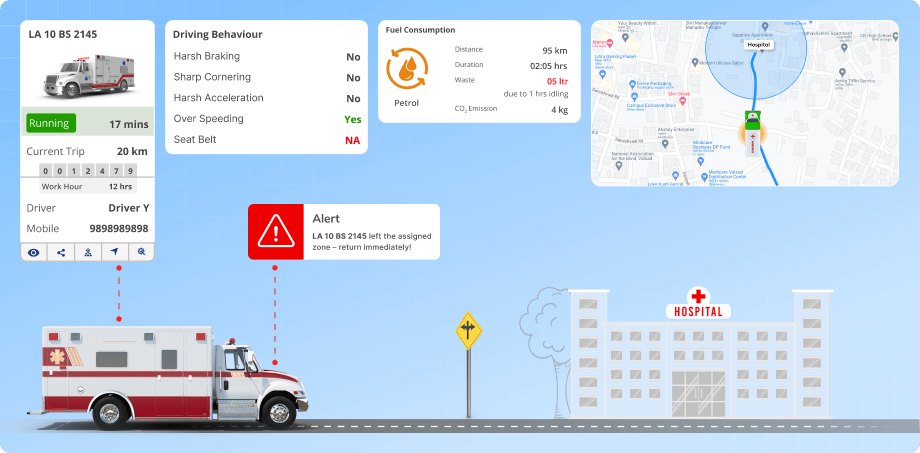Ambulance fleets are expected to act fast, stay visible, and respond accurately. But in many cities and towns, emergency vehicles still operate without proper tracking. The authority lacks real-time updates. Drivers face delays due to traffic or unclear routing. Hospitals often receive patients without any prior coordination. These gaps lead to slower response times and missed service expectations. For teams managing emergency operations, the need for a reliable system has become urgent. That’s why ambulance operators are now turning to live vehicle tracking software. It is a digital solution designed to improve visibility and coordination across the entire response workflow.
Improving emergency response time with live vehicle tracking for ambulance fleets
Introduction
Challenges
- No real-time location updates:
Dispatchers often rely on phone calls or manual updates to track ambulances. This causes confusion, slows response times, and delays vehicle assignment. - Poor coordination with hospitals:
Hospitals don’t get timely updates on ambulance arrival. This limits their ability to prepare, especially during busy or critical times. - No records to review or improve:
After a call, key details like arrival time, delays, or routes are not tracked. This makes it hard to analyze or improve performance. - Unsafe driving under pressure:
Ambulance drivers may speed or brake harshly under pressure. Without monitoring, these risky behaviours go unnoticed putting lives in danger.
Solution
- Live tracking with continuous updates:
Dispatchers can see the real-time location of ambulances, along with movement, idle time, and trip status helping assign the nearest available vehicle without delay. - Geofence and critical location alerts:
Set zones like hospitals or high-risk areas as geofences. Get instant alerts when an ambulance enters or exits these locations keeping teams informed and ready. - Trip replay and trip summary:
Each trip is recorded with time, route, and stoppages. Managers can replay the trip to review events and spot areas for improvement. - Driver performance evaluation:
Monitors speeding, harsh braking, and turns. Drivers receive scores, allowing managers to coach unsafe behavior and reward safe driving. - Instant alerts and event-based notifications:
Alerts are triggered for long halts, zone exits, or unusual activity. This helps control teams respond quickly if something goes wrong. - Health monitoring and preventive maintenance:
Tracks vehicle health, coolant levels, and usage. Sends maintenance reminders to avoid breakdowns and keep ambulances emergency-ready.
Results
- Significant improvement in response time: With live tracking and optimized routing, ambulances reached patients faster. This reduced delays in dispatch and improved overall emergency response time.
- Better coordination across teams: Hospital staff and control rooms received timely alerts about ambulance movement. This led to smoother handovers and quicker patient care upon arrival.
- Increased fleet reliability: Vehicle monitoring ensured ambulances stayed in top condition. Reduced breakdowns kept more ambulances ready for emergencies.




